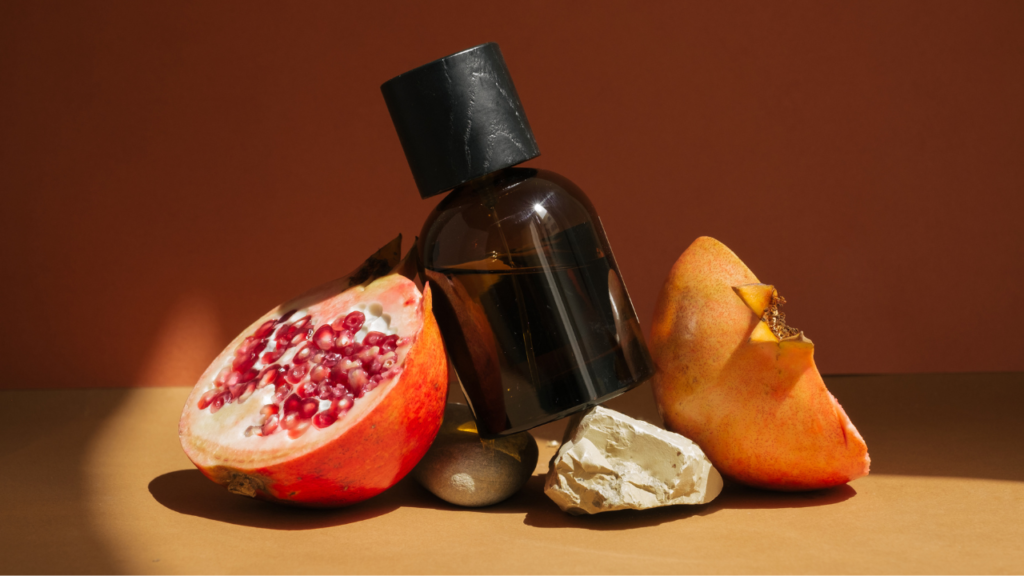
What Is Circular Beauty?
The term refers to a green business model that keeps materials in use through repair and reuse, extends product life-cycle through quality, and purposely minimizes waste.
The beauty industry is currently built around the linear economic model, where we take from the earth, make something, then consumers throw it away. This take-make-waste system is responsible for an unprecedented amount of waste.
It was reported in Refinery29, that the beauty industry produces 120 billion units of packaging each year. By 2050, it is predicted there will be 12 billion tonnes of beauty packaging in landfill. Circular beauty is a positive step towards helping reduce the impact.
According to the Food Aware Community Interest Company, 18 million tonnes of food ends up in landfill every year. This equates to 1/3 of the food produced by farmers, 1/3 of food sold in supermarkets and 1/3 of the food in your household gets wasted annually. This adds to our environmental problems.
Circular beauty involves using food waste to make new and eco-conscious beauty products. Instead of using ingredients which would normally use more natural resources to manufacture, circular beauty uses up food that would otherwise go to waste. Coffee grounds, bananas and “ugly” carrots are all being used to make beautiful cleansers, creams and masks.
The main challenge for the production of upcycled cosmetics is the adaptation of the raw materials They need to be in fresh condition to further process them into cosmetic products. In addition, these materials need to be free of germs and any possible contamination.
Achieving circularity also relies heavily upon innovating packaging. The single largest contributor of carbon emissions in the beauty industry is single-use packaging. Understanding the significance of reusing packaging, via endlessly refillable containers, as opposed to recycling, is a step in the right direction. While recycling is part of circularity, reuse should always come first.
As beauty consumers, we can take steps to consume less, waste less, reuse packaging (or recycle it responsibly). But for the purchases we do make, we can also vote with our dollars by supporting environmentally responsible brands that put their values into concrete actions.
References:
GLOSSYBOX Beauty Unboxed. 2022. Circular Beauty Is The Latest Eco-Friendly Trend – But What Is It? – GLOSSYBOX Beauty Unboxed. [ONLINE] Available at: https://www.glossybox.co.uk/magazine/2019/09/25/circular-beauty/#:~:text=What%20Is%20Circular%20Beauty%3F,even%20better%20for%20your%20skin.. [Accessed 10 August 2022].
Condé Nast. 2022. Circular Beauty Is The New Sustainable Beauty Trend | Glamour UK. [ONLINE] Available at: https://www.glamourmagazine.co.uk/gallery/circular-beauty. [Accessed 10 August 2022].
Harper’s BAZAAR. 2022. Circular Beauty to End Waste Problem – Emma Lewisham, Jane Goodall. [ONLINE] Available at: https://www.harpersbazaar.com/beauty/skin-care/a37754699/emma-lewisham-jane-goodall-circular-beauty/. [Accessed 10 August 2022].
Formula Botanica. 2022. Podcast 66: What is Circular Beauty? – Formula Botanica. [ONLINE] Available at: https://formulabotanica.com/podcast-circular-beauty/. [Accessed 10 August 2022].
NATRUE. (2021). Circular beauty: upcycled ingredients in cosmetic products. [online] Available at: https://www.natrue.org/circular-beauty-upcycled-ingredients-in-cosmetic-products/. [Accessed 23 Nov 2022].
